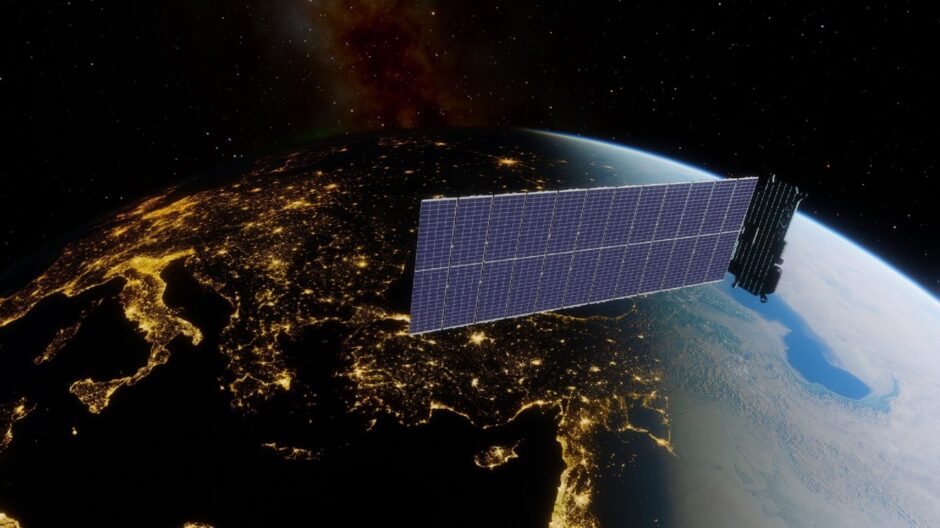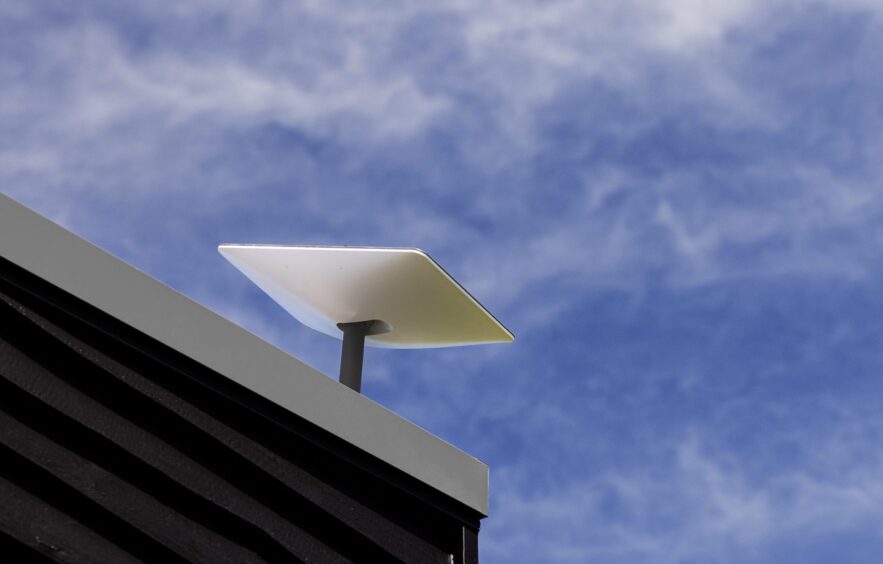If you can see the sky, you’re connected.
That’s the golden rule when it comes to satellite internet, including Starlink – the satellite internet provider owned and led by controversial tech billionaire Elon Musk.
The CEO of Tesla Motors and chairman of social media platform X (formerly Twitter) is also the owner of SpaceX, an aeronautics firm which has launched more than 6,000 satellites into low orbit around the Earth since 2019.
These ‘mega-constellations’ of satellites are used to provide a non-wired internet service, known as Starlink.
And now Starlink has made it to Dundee, at Invergowrie’s James Hutton Institute (JHI).
But what does Starlink do that fiber-optic cables can’t? Is it worth the price?
Can private consumers use the tech?
And how do we navigate the Elon Musk of it all?
I sat down with JHI agronomist Andrew Christie to get some answers.
What made JHI consider Starlink?
The problem JHI wanted to solve, according to Andrew, was connectivity across farm fields.
The agricultural research centre wanted to be able to see and react to field data in real time, in order to further research into use of automation and robotics on the farm.
But this was being obstructed by slow download speeds (the rate at which digital information is transmitted to the user) and high latency (the time a screen takes to load after a command is pressed).
“Legacy internet providers [Sky, Virgin Media, etc] use fibre optic cables, run underground,” explains Andrew, 32, who lives on a family farm near Perth and works at JHI.
“It’s easy to have and maintain fibre optic connections in a city, but harder in rural areas. This means rural areas, can suffer from poor broadband connection.
“Whereas to use satellite internet, you just need to be outside, with a full, unobstructed view of the sky.
“Instead of your ‘plumbed in’ connection leading on to wifi from a router, you get the internet straight from the satellites.
“So as long as you’ve got a clear view of the sky, you’ll be able to get an internet connection.”
Using Starlink as the internet provider, JHI set up a private 5G network with the idea that it would allow all their devices to talk to one another across the large outdoor distances involved in farming.
Wait – how is 5G different to 4G again?
Unlike previous ‘G’s – 3G, 4G – 5G allows for what’s called the Internet of Things (IoT). This allows devices and appliances like smartwatches or smart heating systems, to talk to one another.
Is Starlink working for Dundee centre?
The short answer is yes, it’s working.
Since moving from legacy internet providers to satellite internet, Andrew says the network is achieving speeds of around 150-250 megabytes per second (mbps).
Although fibre optic internet can boast speeds up to 1,000mbps, JHI doesn’t need the process that amount of digital data in the field.
So the info speed is more than adequate, while those latency times have come way down, meaning the researchers are getting real-time reactions when using the internet.
What does this mean in real-life terms?
In practical terms, this has allowed JHI to advance several projects, including remote tractor guidance systems and automated irrigation.
“This technology has allowed us to bring together the networks which were automating our irrigation system,” explains Andrew.
“Not just allowing the automation itself, but providing the connectivity to allow a wider area to be covered.
“All of the farm was included in one network, rather than having a lot of small networks, which would have been the case before.”
The best way to imagine this is one large, digital marquee doing away with the need for a dozen or so umbrellas. Much simpler, right?
Driverless tractors and robot dogs – the future of farming in Tayside and Fife?
Another (slightly sexier) application of this tech has been the advancement of agricultural robots.
As in, robots that go scouting about fields and look at crops, and send farmers data which helps them to grow healthier crops with higher yields.
“Some of the robots look like tractors without the cab,” Andrew explains. “It’s doing the same job as a tractor, but you take the person off the seat, and it does exactly what you’ve told it. Plus, it means tractors could be linked together to talk to each other.
“Or that’s the idea!” he adds.
“Then some of the robots, quadrupeds, are like robot dogs.
“These smaller ones are really for observing and monitoring, and you can add tools to them. So we can put a Lidar sensor on the machine and look at the canopy as well as obstacles in the field.
“Or we can put cameras on for different spectrums of light so that we can assess the performance of the physiology of the crop in front of us and use that to analyse it.”
This, it seems, could be the advent of a new era of ‘smart’ farming, both in research and commercially.
For Tayside and Fife, which boasts a huge amount of farmland, the developments could be game-changing.
Can private clients use satellite internet?
And satellite internet isn’t just of use to farmers, or businesses.
Residential households can use the tech too, albeit at a higher than average price for internet access.
Andrew reveals he has taken his work home with him, setting up his own home with Starlink after seeing how effective it was for his work at JHI.
“It’s £75 a month for the domestic contract I have,” he says. “It’s quite expensive for what it is, but it gives you something much better than what you had: reliable, fast connection.
“And it’s replacing landline rental and broadband, so there are savings to be made there.
“I know that quite a few other farmers have taken on satellite internet as a solution now, rather than mobile broadband.
“It’s so easy to set up, and ideal when a farm can cover several miles.”
Can you separate the tech from Elon Musk?
That all sounds incredible, but during our conversation, I can’t seem to get away from the Elon Musk of it all.
The tech mogul is a controversial figure.
Some hail him as an entrepreneurial genius, and a radical thinker.
He’s also come under fire for everything from his politics to his business ethics.
Recently, astronomers criticised him for flooding the skies with Starlink and Starshield (the defence arm of SpaceX) satellites, saying it hindered astronomical research.
So I can’t help but wonder if there’s any unease or hesitation about using or endorsing his products?
For Andrew, the answer is simple: use of the tech is not endorsement of the man.
I notice he uses the term “satellite internet provider” rather than Starlink, and he explains that this is deliberate.
“My fear is that a link to him becomes a link to his policies or his motivations,” says Andrew.
“What we need to do is remain objective with the whole thing, looking at it from the possibilities of the technology, rather than the link back to the person at the top of the company.”
And indeed, competitors are already emerging to challenge Musk’s monopoly on satellite internet provision.
Major competitors include Amazon’s Project Kuiper, which boasts more than 3,000 satellites.
And at the time of writing, the EU has just announced the launch of its Iris2 space programme, which will start with a €10 billion, 290-satellite constellation.
So it seems that satellite internet won’t remain the domain of Elon alone for long.


















Conversation